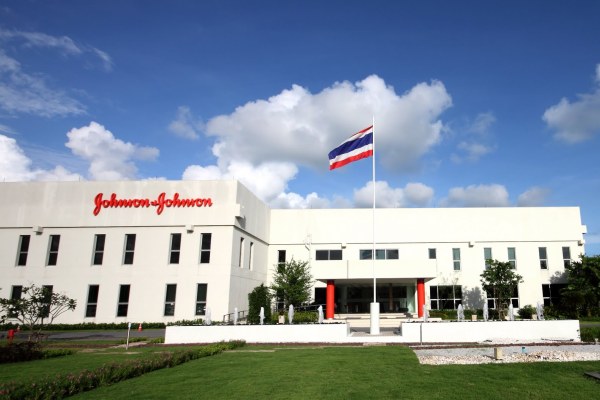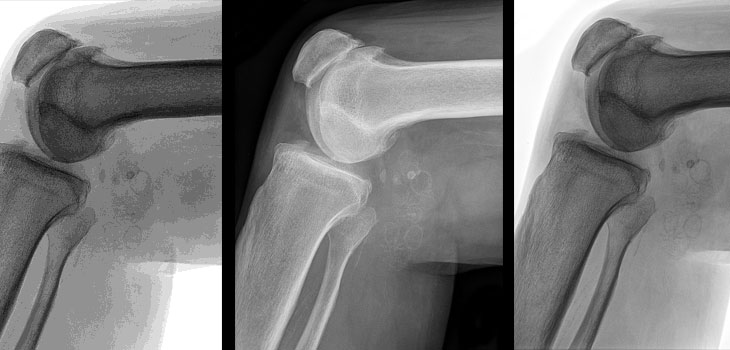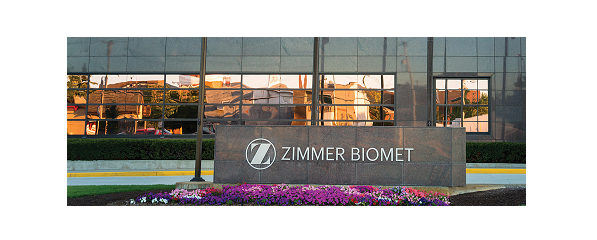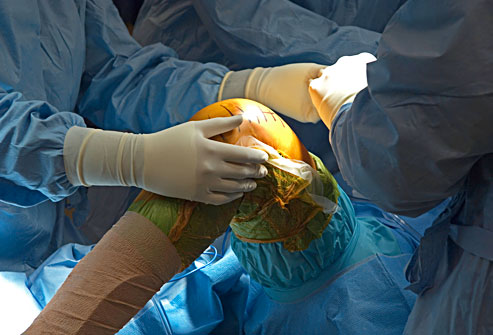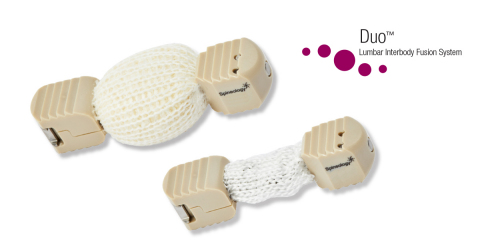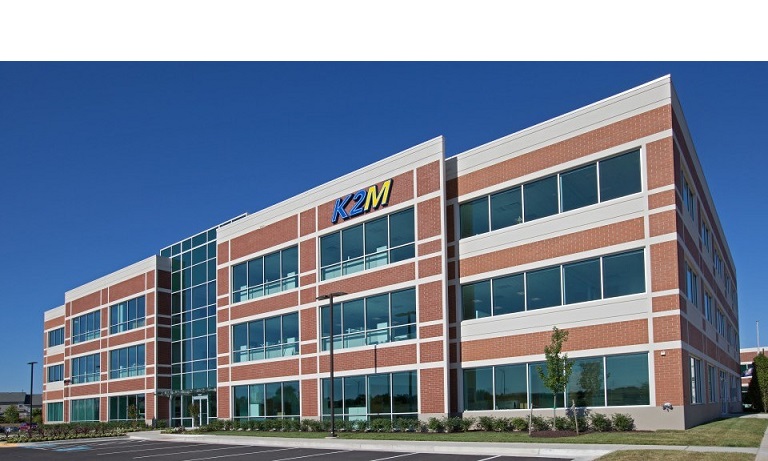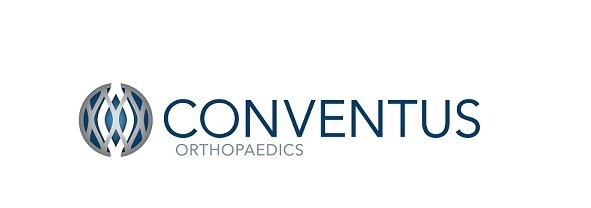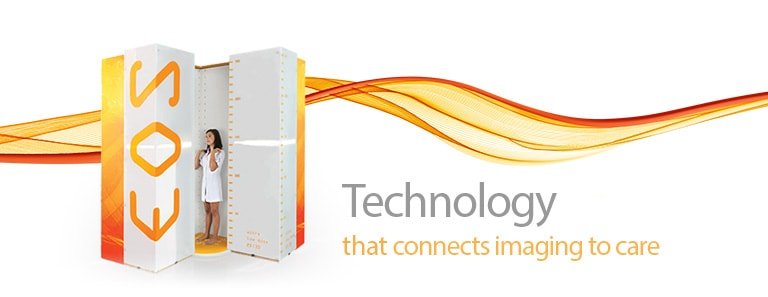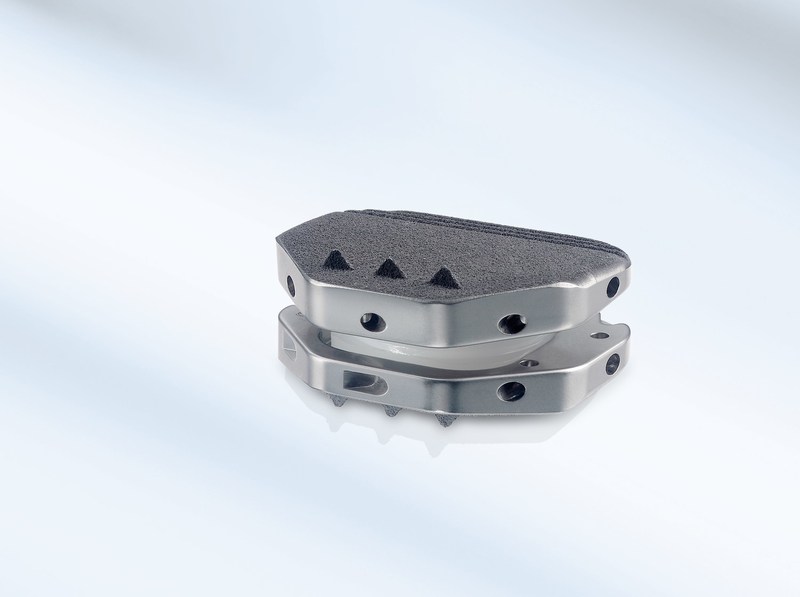NEW BRUNSWICK, N.J., April 17, 2018 /PRNewswire/ — Johnson & Johnson (NYSE: JNJ) today announced sales of $20.0 billion for the first quarter of 2018, an increase of 12.6% as compared to the first quarter of 2017. Operational sales results increased 8.4% and the positive impact of currency was 4.2%. Domestic sales increased 6.1%. International sales increased 19.9%, reflecting operational growth of 10.9% and a positive currency impact of 9.0%. Excluding the net impact of acquisitions and divestitures, on an operational basis, worldwide sales increased 4.3%, domestic sales increased 1.3% and international sales increased 7.6%.*
Net earnings and diluted earnings per share for the first quarter of 2018 were $4.4 billion and $1.60, respectively. First-quarter 2018 net earnings included after-tax intangible amortization expense of approximately $1.0 billion and a charge for after-tax special items of approximately $0.3 billion. First-quarter 2017 net earnings included after-tax intangible amortization expense of approximately $0.2 billion and a charge for after-tax special items of approximately $0.4 billion. Excluding after-tax intangible amortization expense and special items, adjusted net earnings for the current quarter were $5.6 billion and adjusted diluted earnings per share were $2.06, representing increases of 11.8% and 12.6%, respectively, as compared to the same period in 2017.* On an operational basis, adjusted diluted earnings per share also increased 5.5%.* A reconciliation of non-GAAP financial measures is included as an accompanying schedule.
“We are pleased with the strong and consistent performance delivered by our colleagues around the world, demonstrated by our sales and EPS growth in the first quarter,” said Alex Gorsky, Chairman and Chief Executive Officer. “Our Pharmaceutical business continues to deliver robust growth and we are pleased with the improvement in our Consumer business. In our Medical Devices businesses, we have areas of leadership and continue to make investments and portfolio choices to improve performance.”
Mr. Gorsky continued, “The U.S. tax legislation passed late last year is creating the opportunity for us to invest more than $30 billion in R&D and capital investments in the U.S. over the next four years, which is an increase of 15%.”
The Company increased its sales guidance for the full-year 2018 to a range of $81.0 to $81.8 billion, reflecting expected operational growth in the range of 4.0% to 5.0%. Additionally, the Company reaffirmed its adjusted earnings guidance for full-year 2018 to a range of $8.00 to $8.20 per share, reflecting expected operational growth in the range of 6.8% to 9.6%.
Segment Sales Performance
Worldwide Consumer sales of $3.4 billion for the first quarter 2018 represented an increase of 5.3% versus the prior year, consisting of an operational increase of 1.3% and a positive impact from currency of 4.0%. Domestic sales increased 1.6%, international sales increased 8.2%, which reflected an operational increase of 1.2% and a positive currency impact of 7.0%. Excluding the net impact of acquisitions and divestitures, on an operational basis, worldwide sales increased 2.0%, domestic sales increased 1.6% and international sales increased 2.3%*.
Worldwide operational results, excluding the net impact of acquisitions and divestitures, were driven by beauty products primarily NEUTROGENA, AVEENO, and Dr. Ci Labo, and international analgesics in over-the-counter products, partially offset by the negative impact of domestic baby care products.
Worldwide Pharmaceutical sales of $9.8 billion for the first quarter 2018 represented an increase of 19.4% versus the prior year with an operational increase of 15.1% and a positive impact from currency of 4.3%. Domestic sales increased 9.9%; international sales increased 33.1%, which reflected an operational increase of 22.5% and a positive currency impact of 10.6%. Sales included the impact of Actelion Ltd which contributed 7.6%, to worldwide operational sales growth. Excluding the net impact of acquisitions and divestitures, on an operational basis, worldwide sales increased 7.5%, domestic sales increased 2.2% and international sales increased 15.3%.*
Worldwide operational results, excluding the net impact of acquisitions and divestitures, were driven by new products and the strength of core products. Strong growth in new products include DARZALEX (daratumumab), for the treatment of patients with multiple myeloma, IMBRUVICA (ibrutinib), an oral, once-daily therapy approved for use in treating certain B-cell malignancies, a type of blood or lymph node cancer and TREMFYA (guselkumab), for the treatment of adults living with moderate to severe plaque psoriasis. Additional contributors to operational sales growth included ZYTIGA (abiraterone acetate), an oral, once-daily medication for use in combination with prednisone for the treatment of metastatic, castration-resistant prostate cancer, STELARA (ustekinumab) and international SIMPONI/SIMPONI ARIA (golimumab), biologics for the treatment of a number of immune-mediated inflammatory diseases, XARELTO (rivaroxaban), an oral anticoagulant, and INVEGA SUSTENNA/XEPLION/TRINZA/TREVICTA (paliperidone palmitate), long-acting, injectable atypical antipsychotics for the treatment of schizophrenia in adults.
During the quarter, the U.S. Food and Drug Administration (FDA) approved an additional indication for ZYTIGA (abiraterone acetate), in combination with prednisone for the treatment of patients with metastatic high-risk castration-sensitive prostate cancer and ERLEADA (apalutamide) an oral androgen receptor inhibitor for the treatment of patients with non-metastatic castration-resistant prostate cancer. In addition, the Committee for Medicinal Products for Human Use issued a positive opinion recommending marketing authorization for JULUCA (rilpivirine and dolutegravir), the first, single-pill, two-drug regimen for the treatment of human immunodeficiency virus type 1 infection.
Also in the quarter, a marketing authorization application was submitted to the European Medicines Agency for apalutamide, an oral androgen receptor inhibitor for the treatment of patients with high-risk non-metastatic castration-resistant prostate cancer.
Worldwide Medical Devices sales of $6.8 billion for the first quarter 2018 represented an increase of 7.5% versus the prior year consisting of an operational increase of 3.2% and a positive currency impact of 4.3%. Domestic sales increased 2.2%; international sales increased 12.7%, which reflected an operational increase of 4.2% and a positive currency impact of 8.5%. Sales included the partial quarter impact of the recently acquired surgical vision business which contributed 3.1%, to worldwide operational sales growth. Excluding the net impact of acquisitions and divestitures, on an operational basis, worldwide sales increased 1.1%, domestic sales decreased 0.2% and international sales increased 2.4%.*
Worldwide operational results, excluding the net impact of acquisitions and divestitures, were driven by ACUVUE contact lenses in the Vision Care business; electrophysiology products in the Interventional Solutions business; endocutters in the Advanced Surgery business; and trauma products in the Orthopaedics business, partially offset by declines in the Diabetes Care business and spine products in the Orthopaedics business.
During the quarter, the acquisition of Orthotaxy S.A.S., a privately-held developer of software-enabled surgery technologies, including a differentiated robotic-assisted surgery was completed. In addition, the Company announced a binding offer from Platinum Equity, a private investment firm, to acquire its LifeScan business for approximately $2.1 billion, subject to customary adjustments.
Subsequent to the quarter, ACUVUE OASYS with Transitions received 510(k) clearance from the FDA and is indicated for vision correction and the attenuation of bright light.
Additionally, Johnson & Johnson plans to implement actions across its global supply chain that are intended to enable the company to focus resources and increase investments in critical capabilities, technologies and solutions necessary to manufacture and supply its product portfolio of the future, enhance agility and drive growth. The Company expects these supply chain actions will include expanding our use of strategic collaborations, and bolstering our initiatives to reduce complexity, improving cost-competitiveness, enhancing capabilities and optimizing our network. Discussions regarding specific future actions are ongoing and are subject to all relevant consultation requirements before they are finalized.
In total, the Company expects these actions to generate approximately $0.6 to $0.8 billion in annual pre-tax cost savings that will be substantially delivered by 2022. The Company expects to record pre-tax restructuring charges of approximately $1.9 to $2.3 billion, which will be treated as a special item.
About Johnson & Johnson
At Johnson & Johnson, we believe good health is the foundation of vibrant lives, thriving communities and forward progress. That’s why for more than 130 years, we have aimed to keep people well at every age and every stage of life. Today, as the world’s largest and most broadly-based health care company, we are committed to using our reach and size for good. We strive to improve access and affordability, create healthier communities, and put a healthy mind, body and environment within reach of everyone, everywhere. We are blending our heart, science and ingenuity to profoundly change the trajectory of health for humanity.
* Operational sales growth excluding the net impact of acquisitions and divestitures, as well as adjusted net earnings, adjusted diluted earnings per share and operational adjusted diluted earnings per share excluding after-tax intangible amortization expense and special items, are non-GAAP financial measures and should not be considered replacements for, and should be read together with, the most comparable GAAP financial measures. Except for guidance measures, reconciliations of these non-GAAP financial measures to the most directly comparable GAAP financial measures can be found in the accompanying financial schedules of the earnings release and the Investor Relations section of the company’s website at www.investor.jnj.com. Johnson & Johnson does not provide GAAP financial measures on a forward-looking basis because the company is unable to predict with reasonable certainty the ultimate outcome of legal proceedings, unusual gains and losses, acquisition-related expenses and purchase accounting fair value adjustments without unreasonable effort. These items are uncertain, depend on various factors, and could be material to Johnson & Johnson’s results computed in accordance with GAAP.
Johnson & Johnson will conduct a conference call with investors to discuss this news release today at 8:30 a.m., Eastern Time. A simultaneous webcast of the call for investors and other interested parties may be accessed by visiting the Johnson & Johnson website at www.investor.jnj.com. A replay and podcast will be available approximately two hours after the live webcast by visiting www.investor.jnj.com.
Copies of the financial schedules accompanying this press release are available at www.investor.jnj.com/historical-sales.cfm. These schedules include supplementary sales data, a condensed consolidated statement of earnings, reconciliations of non-GAAP financial measures, and sales of key products/franchises. Additional information on Johnson & Johnson, including adjusted income before tax by segment, a pharmaceutical pipeline of selected compounds in late stage development and a copy of today’s earnings call presentation can be found on the company’s website at www.investor.jnj.com.
NOTE TO INVESTORS CONCERNING FORWARD-LOOKING STATEMENTS
This press release contains “forward-looking statements” as defined in the Private Securities Litigation Reform Act of 1995 regarding, among other things: future operating and financial performance, product development, market position and business strategy. The reader is cautioned not to rely on these forward-looking statements. These statements are based on current expectations of future events. If underlying assumptions prove inaccurate or known or unknown risks or uncertainties materialize, actual results could vary materially from the expectations and projections of Johnson & Johnson. Risks and uncertainties include, but are not limited to: economic factors, such as interest rate and currency exchange rate fluctuations; competition, including technological advances, new products and patents attained by competitors; challenges inherent in new product research and development, including uncertainty of clinical success and obtaining regulatory approvals; uncertainty of commercial success for new and existing products; challenges to patents; the impact of patent expirations; the ability of the company to successfully execute strategic plans, including restructuring plans; the impact of business combinations and divestitures; manufacturing difficulties or delays, internally or within the supply chain; product efficacy or safety concerns resulting in product recalls or regulatory action; significant adverse litigation or government action, including related to product liability claims; changes to applicable laws and regulations, including tax laws and global health care reforms; trends toward health care cost containment; changes in behavior and spending patterns of purchasers of health care products and services; financial instability of international economies and legal systems and sovereign risk; increased scrutiny of the health care industry by government agencies. A further list and descriptions of these risks, uncertainties and other factors can be found in Johnson & Johnson’s Annual Report on Form 10-K for the fiscal year ended December 31, 2017, including in the sections captioned “Cautionary Note Regarding Forward-Looking Statements” and “Item 1A. Risk Factors,” and in the company’s subsequent Quarterly Reports on Form 10-Q and other filings with the Securities and Exchange Commission. Copies of these filings are available online at www.sec.gov, www.jnj.com or on request from Johnson & Johnson. Any forward-looking statement made in this release speaks only as of the date of this release. Johnson & Johnson does not undertake to update any forward-looking statement as a result of new information or future events or developments.
|
Johnson & Johnson and Subsidiaries |
|||||||||
|
Supplementary Sales Data |
|||||||||
|
(Unaudited; Dollars in Millions) |
FIRST QUARTER |
||||||||
|
Percent Change |
|||||||||
|
2018 |
2017 |
Total |
Operations |
Currency |
|||||
|
Sales to customers by |
|||||||||
|
segment of business |
|||||||||
|
Consumer |
|||||||||
|
U.S. |
$ 1,436 |
1,414 |
1.6 |
% |
1.6 |
– |
|||
|
International |
1,962 |
1,814 |
8.2 |
1.2 |
7.0 |
||||
|
3,398 |
3,228 |
5.3 |
1.3 |
4.0 |
|||||
|
Pharmaceutical |
|||||||||
|
U.S. |
5,354 |
4,872 |
9.9 |
9.9 |
– |
||||
|
International |
4,490 |
3,373 |
33.1 |
22.5 |
10.6 |
||||
|
9,844 |
8,245 |
19.4 |
15.1 |
4.3 |
|||||
|
Medical Devices |
|||||||||
|
U.S. |
3,161 |
3,092 |
2.2 |
2.2 |
– |
||||
|
International |
3,606 |
3,201 |
12.7 |
4.2 |
8.5 |
||||
|
6,767 |
6,293 |
7.5 |
3.2 |
4.3 |
|||||
|
U.S. |
9,951 |
9,378 |
6.1 |
6.1 |
– |
||||
|
International |
10,058 |
8,388 |
19.9 |
10.9 |
9.0 |
||||
|
Worldwide |
$ 20,009 |
17,766 |
12.6 |
% |
8.4 |
4.2 |
|||

